Just a quick a dirty review of the very popular Topping D50s DAC. Known to measure very well, some of you have asked for my subjective opinion of this much-hyped DAC. Heck, you could even see measurements in the manual.
As you know, I’m all about the subjective. I believe measurements are great for repeatability and finding problem areas. But I’ve realized the important attributes that translate into the better enjoyment of music simply can’t be measured. However, if better measurements give you better peace of mind, all the power to you.
I haven’t read any of the reviews or even bothered to look at the charts before listening. The only thing that matters is how it sounds. So, let’s cut to the chase.


Build & Setup
As far as setup, nothing fancy here. I have a PS Audio Sprout100, a pair of LSA-10 Statements loudspeakers, Furutech DPS-4 speaker cables, a stock power cord, Mapleshade optical cable, Chromecast Audio, and Iconoclast UPOCC RCA cable. Listening was done through Spotify. You’ll get far better fidelity via Tidal or Qobuz – but I figured Spotify is more ubiquitous.
As far as the build quality, this DAC feels top-notch and looks sleek. It’s also weightier than I expected. I love how you could power it via a USB on your monitor or via a battery pack (more on this later). The auto-on feature and intuitive interface are also much appreciated. Overall, this seems like a very high-quality product.
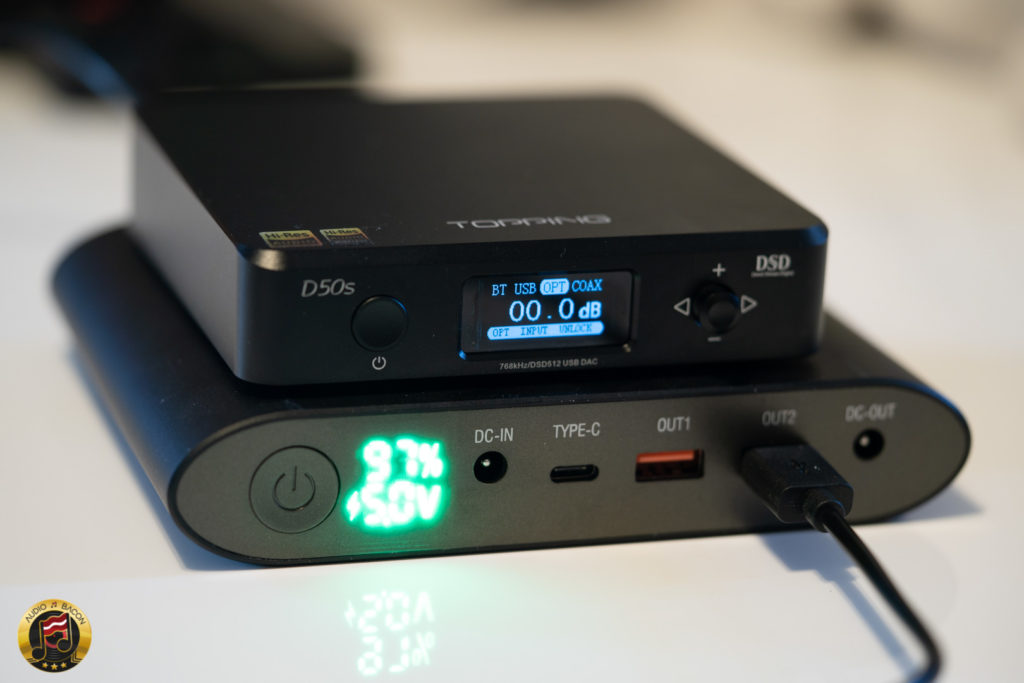
Power
The Topping D50s DAC could be powered by any USB port (5V). However, if you want to maximize its performance, use a battery. I use the Krisdonia for a lot of my gear, including the Chord Electronics Qutest. To me, the gains are well worth the price tag and any inconveniences.
Battery Benefits:
- Much more solidity
- Smoother. Much less grain and roughness
- More weight and dimension
- Better focus
- More tonal colors
- Quieter
- Lyrics are more intelligible
Personally, I would power the Topping D50s via a battery 100% of the time. It’s tough to go back to anything else. For the listening tests, I’ve powered both the D50s and Chromecast Audio with the battery pack.

Filters
With seven different filters, there’s one for everyone. I spent some time going through the various filters. I ended up sticking to either Filter #3 (min. phase fast roll-off filter) or Filter #5 (linear phase fast roll-off filter). The other modes sound a bit cold and tilted towards the top-end. I just felt these two modes had more soul to them.
- FIL 1 (Apodizing fast roll-off filter) – Clean, crisp, quiet. Fantastic separation, layering, and soundstage. A bit cold though.
- FIL 2 (Min. phase slow roll-off filter) – Super quiet but not as dynamic. It has more of a crystalline sound. Perhaps tighter than FIL 1?
- FIL 3 (Min. phase fast roll-off filter) – Has more weight than #1 and #2. Not as clear and quiet as the previous two filters but has more warmth and rhymic drive. There’s a little bit of grain but dynamic and presents more accurate timbre
- FIL 4 (Linear phase slow roll-off filter) – Piano is smooth but voices have some edge to them. Voices aren’t as focused. Mids are carved out a bit. A little patchy.
- FIL 5 (Linear phase fast roll-off filter) – A “fatter sound” vs #3. It’s a clearer version of FIL 3. It’s not as warm but presents more depth and defogs more of the music.
- FIL 6 (Brick wall filter) – A little layer of coarseness over the entire spectrum. There’s something off about this filter. There’s a sense of hollowness and gaps. The lows and mids are bent and shaped in a weird way. A really confused sound.
- FIL 7 (Corrected min. phase fast roll-off filter) – This sounds like FIL 6 with more smoothness and a more nose-pinched sound.
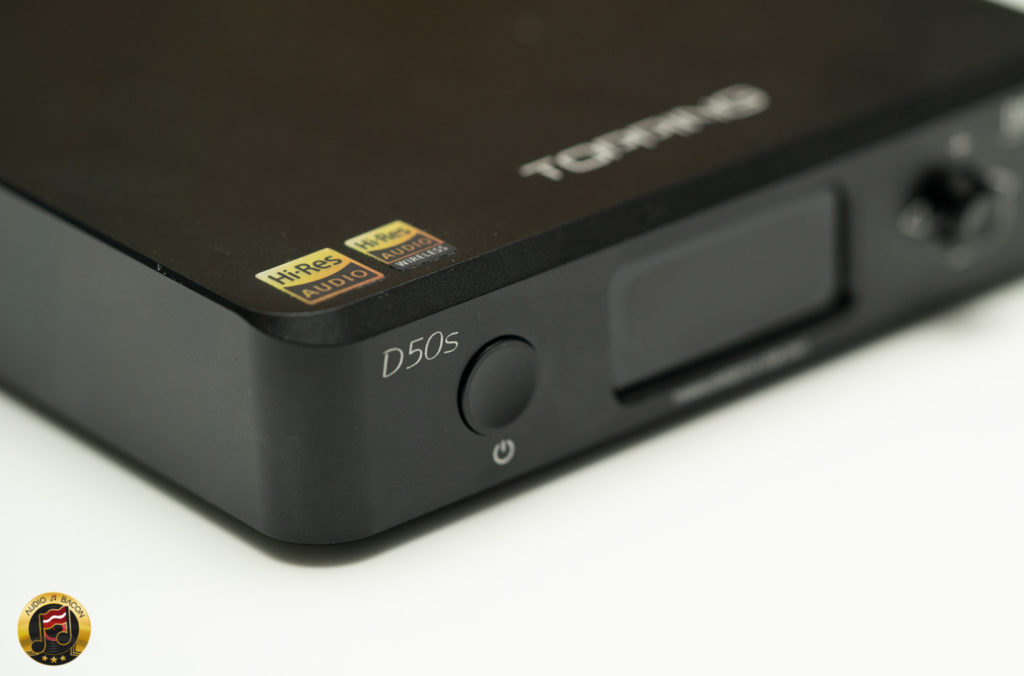
Sound
Pros:
The Topping D50s is impressive on many fronts:
- Incredibly quiet. Musical elements just float.
- This is a very insightful DAC. It digs into the mix. You’ll hear every detail, the timing of decays, and how the recording was structured.
- Bass is very well controlled with fantastic sub-bass definition.
- The soundstage is enormous. It just wraps multiple layers of music around you. This is one of its most stand out qualities.
- Plenty of air and life around performers and instruments. This especially applies to the top end.
- There’s no overemphasis of any particular region.
- There’s a “crispness” to the sound. Transients are super speedy and precise.
- Very dynamic. It’s able to go loud without inciting confusion.
- Outstanding separation, outlining, and separation.
- A very natural sounding top end.
- Sounds great with acoustic. Stringed instruments sound particularly tactile and brilliant.

Cons:
At this price point, it doesn’t matter if it measures well. Tradeoffs are a given.
- It’s a very clean sound that borders on sterile. It is not a sweet or warm sounding DAC.
- Tonally muted. There aren’t a lot of tonal colors in its palette. Sometimes male and female vocals have the same shades.
- Although very detailed, I feel it’s presented in a way that is more superficial.
- It’s more piecewise than it is cohesive. It almost sounds contrived and more “computer than human” in the way it articulates.
- Rougher in the mids. Although high in resolution, voices have this really irritating coarseness and grittiness I can’t get myself to ignore. This was the deal-breaker for me.
- Lacks cohesion. The individual pieces of the recordings sound great – but the connective tissue doesn’t sound natural.
Over time, I just couldn’t get myself to fully engage with the Topping D50s DAC. Although impressive in its resolving and spatial abilities, it just wasn’t musically involving for me. For example, close-miked performances don’t have that intimacy I’d expect. I never felt like “they’re there.”
Aside from inaccuracy in tone, the D50s comes off a tad too lean and icy for my tastes. I prefer a richer more fleshed-out sound. There’s still a bit of “digital haze,” especially in the midrange, that just doesn’t sit well for my ears. There’s a balance between purity and realism – and the D50s tilts more towards the former.

All is not lost. The Topping D50s will surely benefit more when paired with tube amplifiers and darker speakers. Also, if you’re willing to trade tonal quality for transparency – this DAC will be well-suited. It does a superb job of revealing the various layers and inner-details of your favorite recordings.
vs. Chord Electronics Mojo
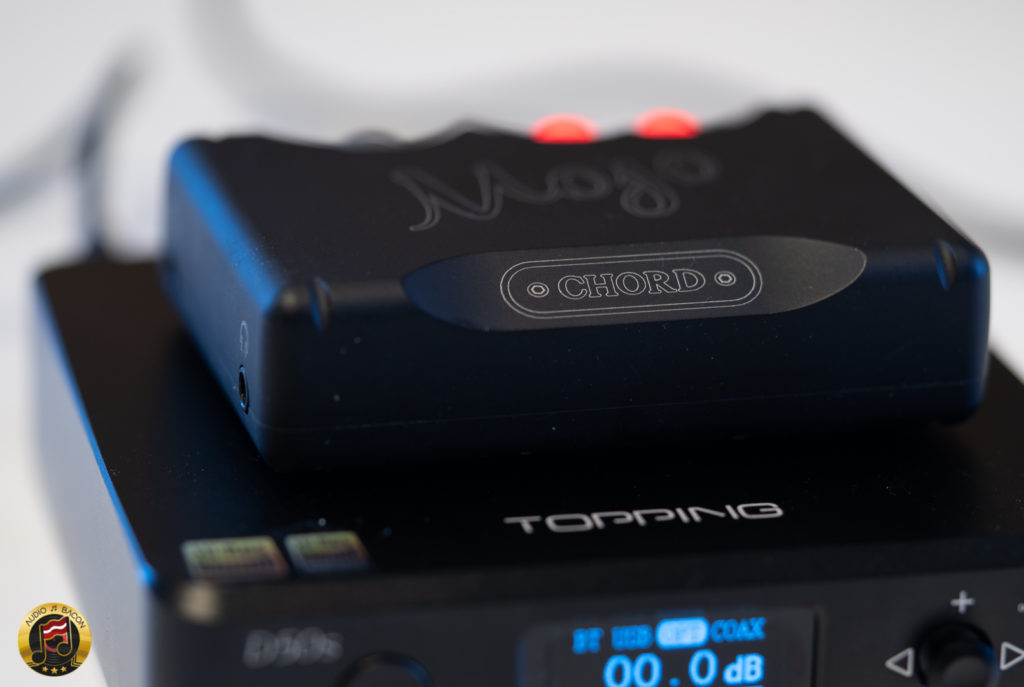
I have no clue how the Mojo measures vs. the D50s – but I would save up for the Mojo any day. It’s much more organic and natural sounding. It’s grainless, silky smooth, and simply more analog sounding. Although not as black backgrounded or top-end brilliant as the D50s, it has a far greater presence and gravity in all the acoustic elements. Timbre is also much more realistic- especially when it comes down to piano, double bass, and voices.
That said, the D50s has a more sparkly top end. It dissects and outlays the details very well. It has more shine and energy versus the Mojo’s more grounded and intimate presentation. It’s also quieter and does a more obvious job of pulling apart the music. You’re able to hear the individual nuances – and even more details in the low-end. The Topping D50s is precisely outlined, speedy, clean-shaven, and atmospheric. For what it’s worth, I do enjoy the D50s for large orchestral and live acoustic performances. So if you value transparency and clarity over warmth – the D50s may work well for you.
In the end, I found the Mojo to just have a better sensual flow, a fuller sound, and tonally closer to what the artist intended. Although not as revealing or treble-present as the D50s, there’s just more soul to the music.
vs. Chord Electronics Qutest
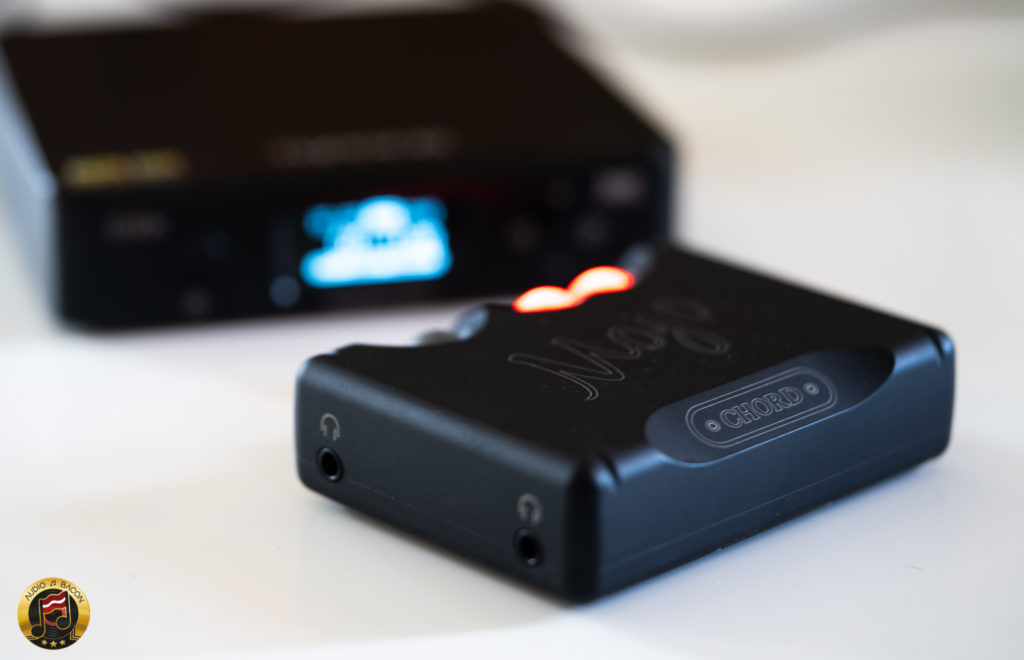
I powered the Qutest with the battery mentioned above with the red filter.
The Chord Electronics Qutest could be the end-game DAC for me 99% of audiophiles. If I hadn’t heard the Chord Electronics TT 2, I would be pretty happy with the Qutest. 🙂
The Qutest has the best of all worlds, especially when powered via a battery. Although not as warm and thick as the Mojo, it has better tonal balance while not sacrificing much in the realm of musicality. It has the quietness, clarity, speed, and resolution of the D50s and the weight, timbre, and density of the Mojo. You also don’t hear the music “in pieces” but as a silky yet textured stream of music. It also articulates with far more ease than the other two DACs. It just shapes and molds the music in ways the Mojo and D50s cannot.
In comparison to the D50s, the Topping has a slightly wider soundstage but is more anemic, metallic, and flat in comparison. But yes, the Chord Electronics Qutest comes at a much steeper price of $1,700. It’s not meant to be a fair comparison, but it’s here for the curious.
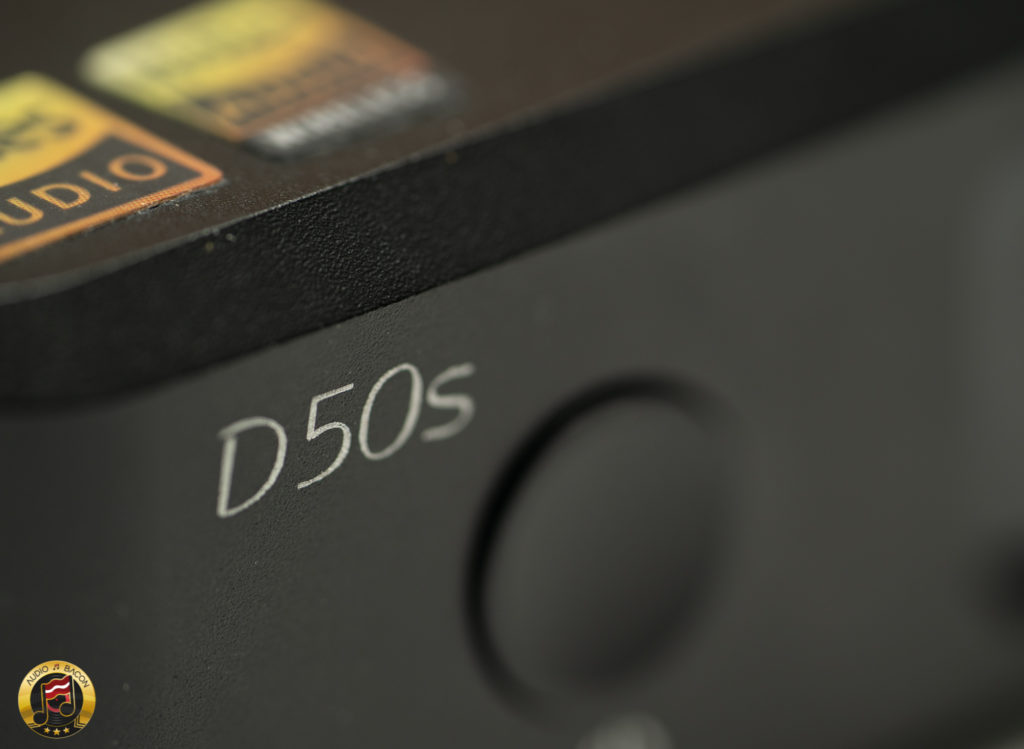
Final Thoughts
Although not a good fit for me, the Topping D50s DAC does offer a ton of value at only $250. If you’re looking to upgrade the sound from the built-in DACs in your laptops or integrated devices, the D50s is definitely worth a listen. In particular, it presents a very wide soundstage with imaging and layering capabilities to match. It also has a knack for clarity and transparency. Just make sure to power it with a battery.
For the money, I have no complaints. However, if you prefer a warmer, smoother, and more euphonic presentation (as I do) – you may want to look elsewhere. The lesson? Measurements won’t tell you whether you’ll enjoy a piece of HiFi equipment. The only thing that makes sense is to trust your own ears.
Purchase Topping D50s DAC ($250)
Merry Christmas ya’ll!
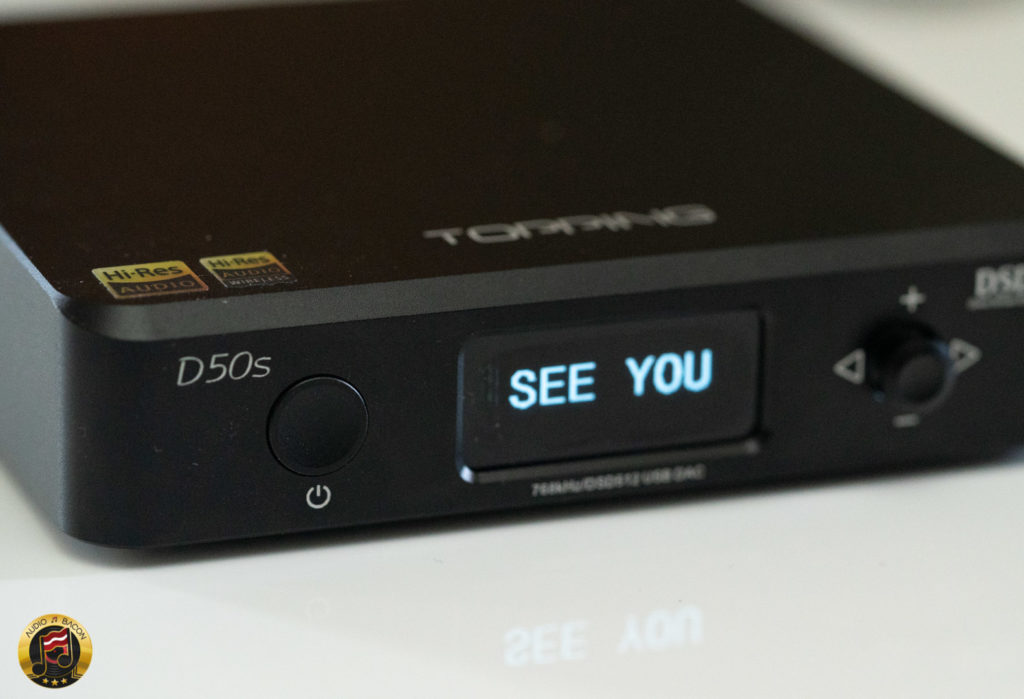





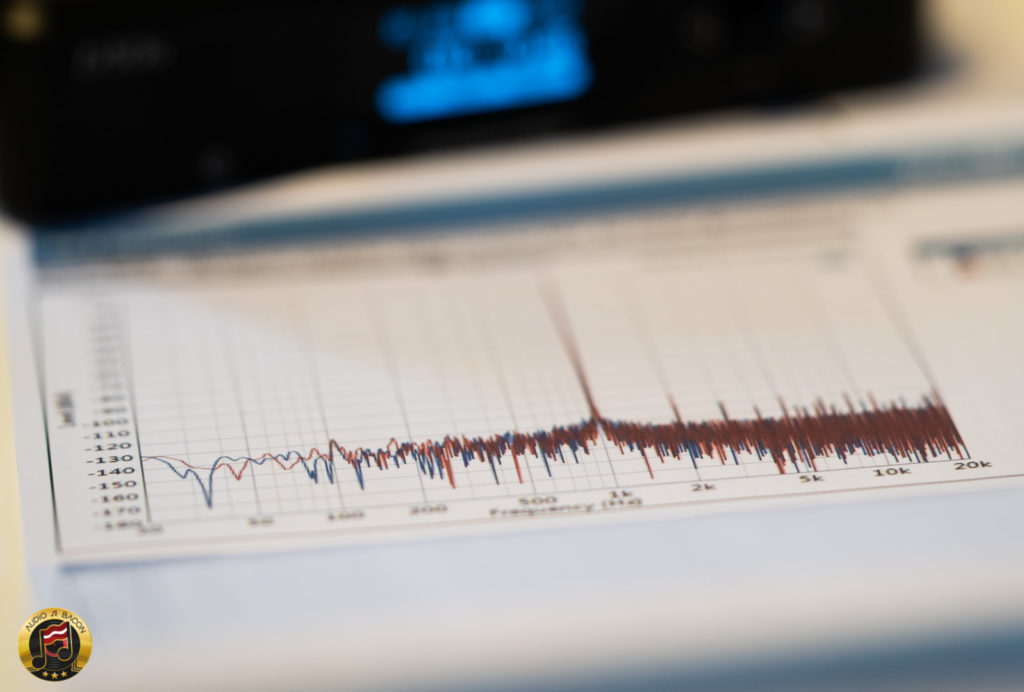

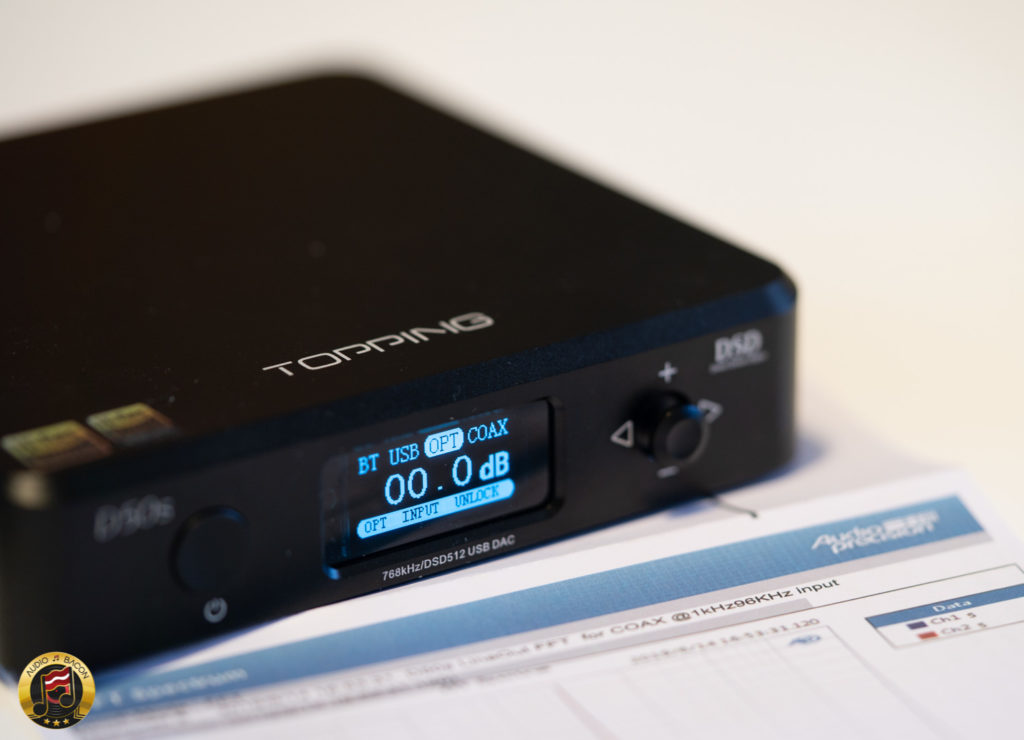


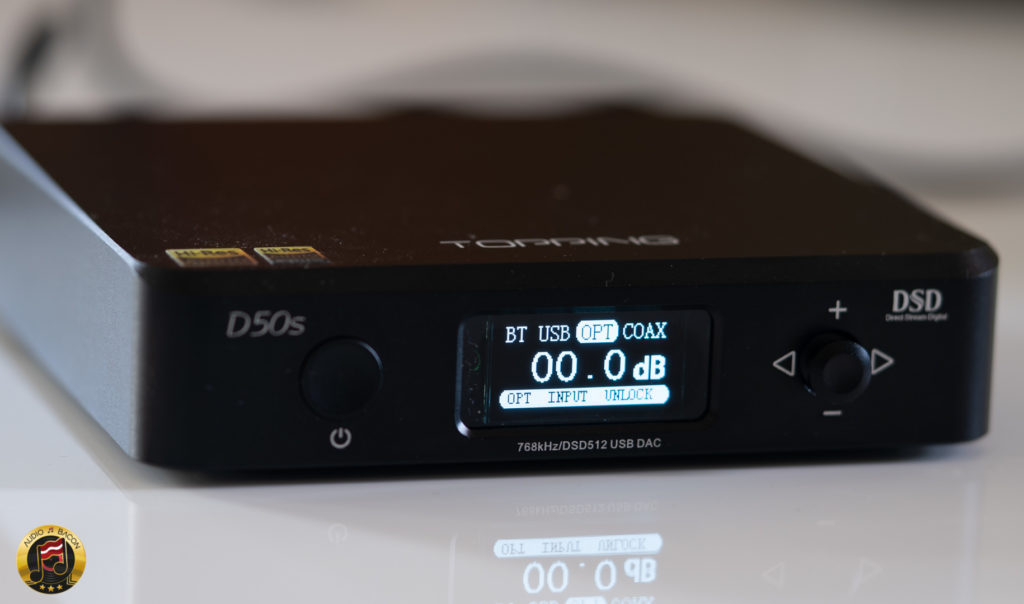
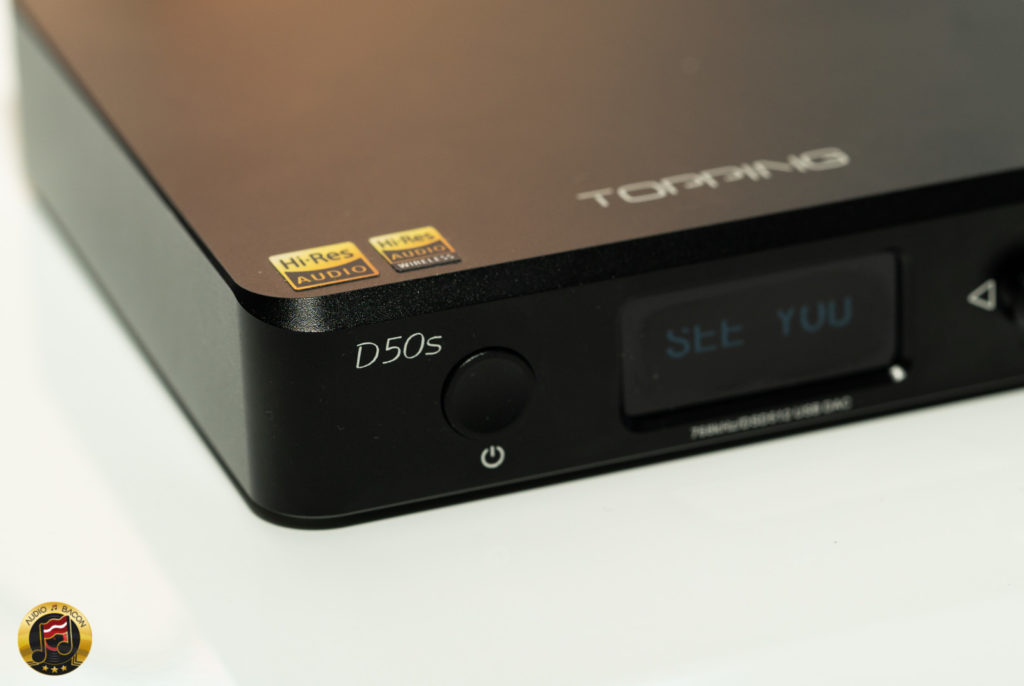

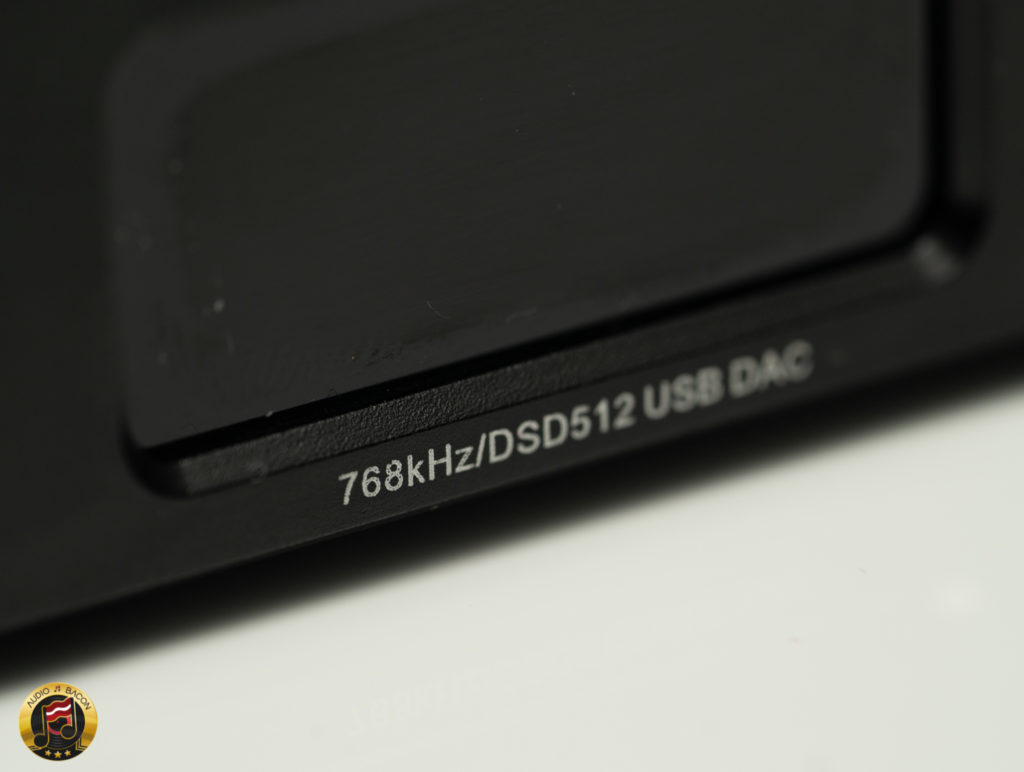








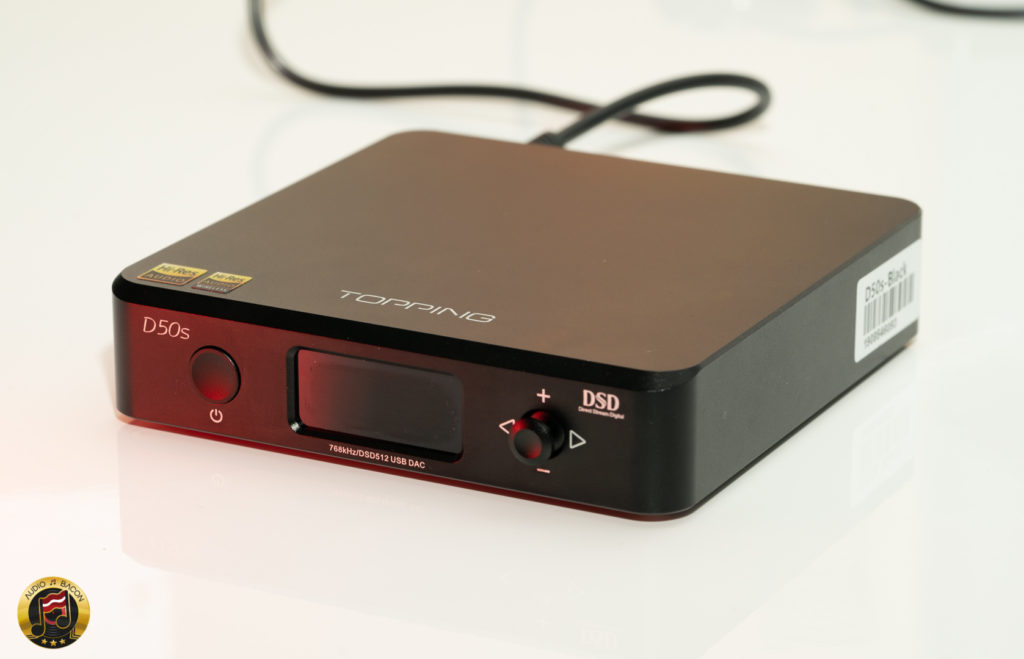
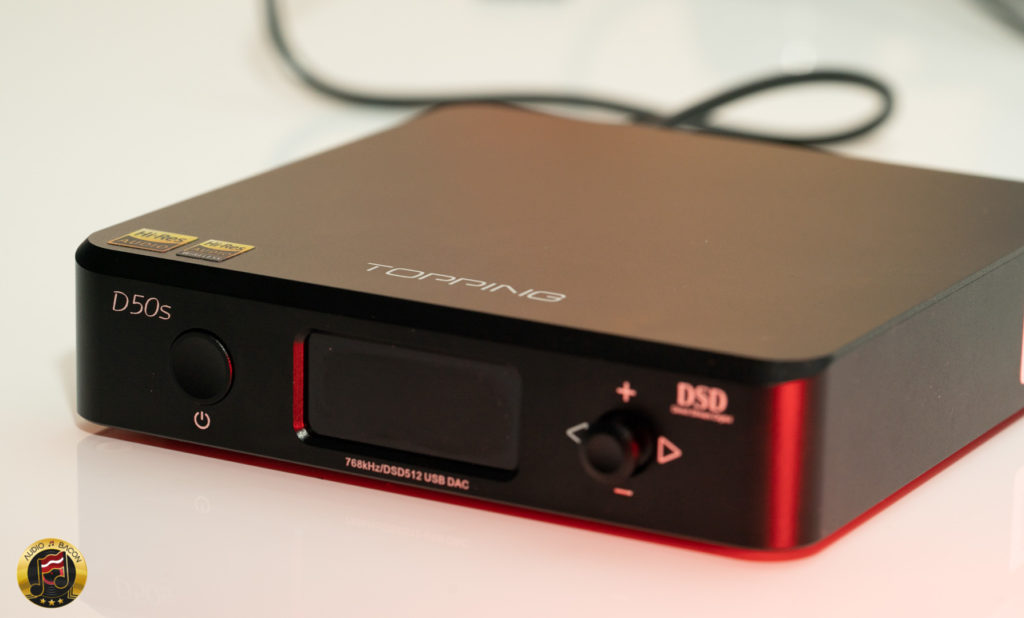







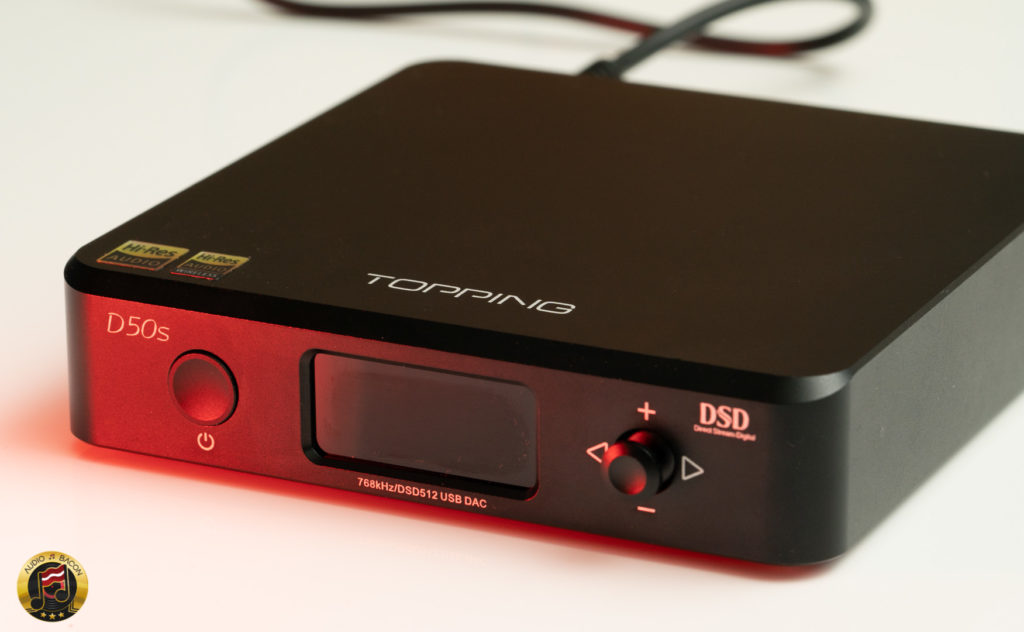


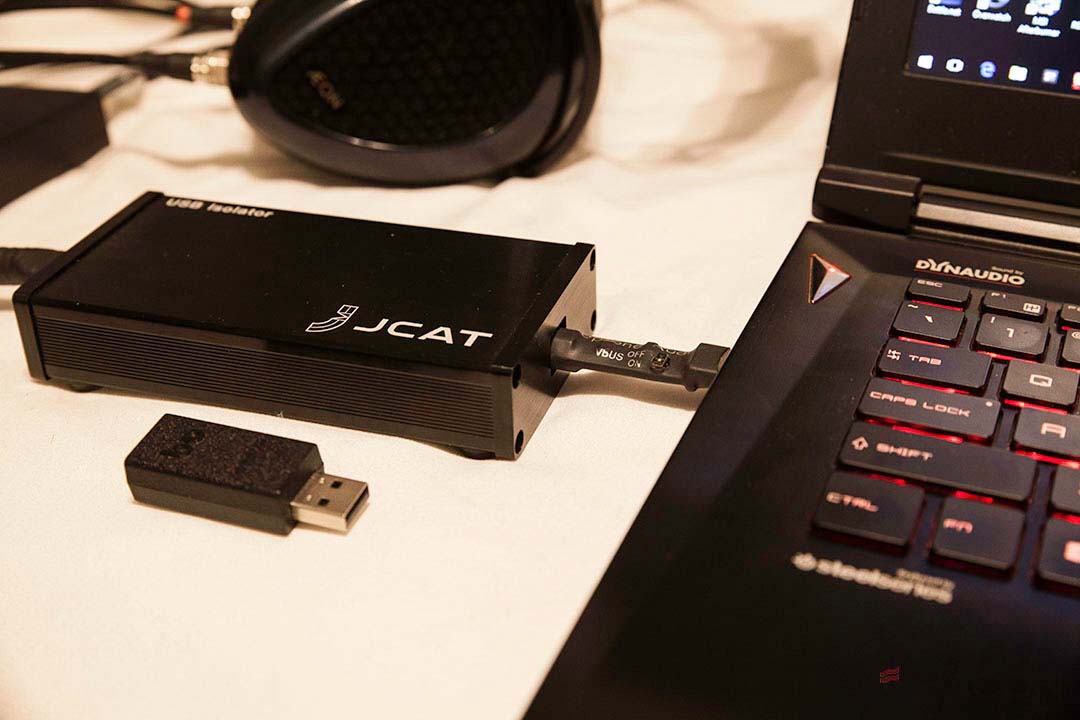

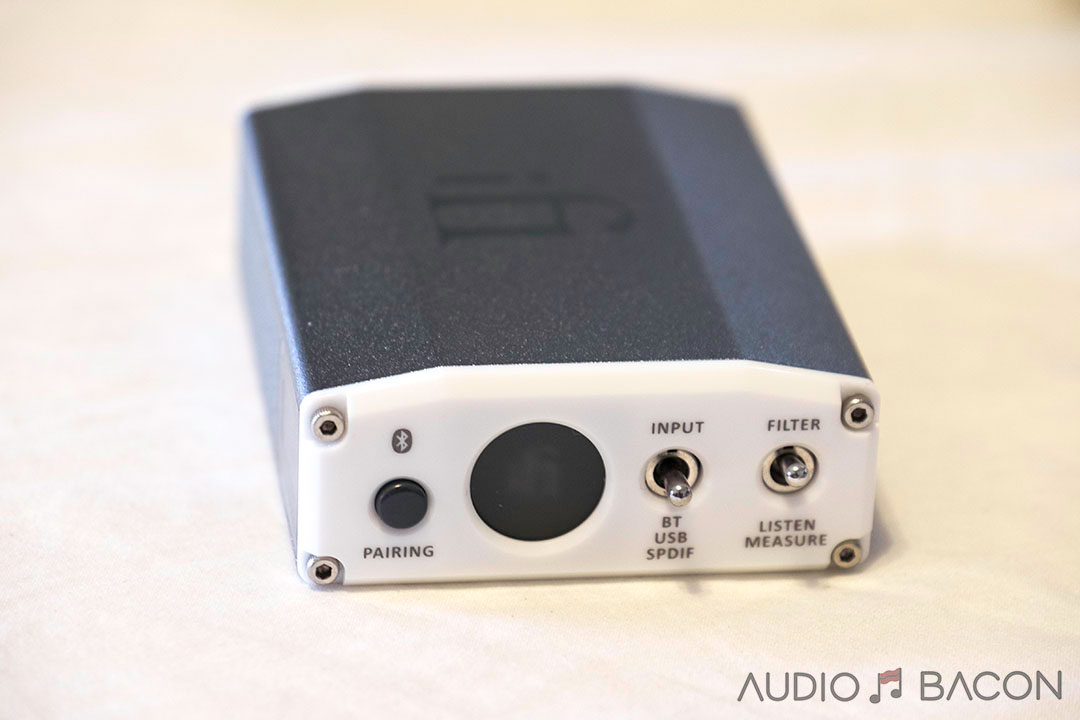


I loved the review, and I hope to see more affordable DACs.
Great review.
I have a similar setup. Chromecast Audio, Topping D50 (not 50s), powered with an Anker battery pack, straight into a Naim NAP100 and Dali Oberon 1 speakers in a small room.
Difference is I am using Tidal instead of Spotify. Sounds fantastic to my ears. Maybe you could try the same review with Tidal.
I did a comparison with an RME ADI-2. Couldn’t hear any difference. But them I’m not one of the “golden eared” brigade. I got an audiophile friend to do a blind comparison. He thought the Topping sounded better on some material, the RME on others.
In my opinion, if you are only using one the streaming services (Spotify, Tidal etc.) you would have to spend a lot more money to improve the sound AND ease of use. I’ve tried a few other applications and nothing beats using Tidal with the CCA.
Hey Robert, that’s a pretty sweet setup you have there. I have to agree, huge difference between Spotify and Tidal. I just figured Spotify was more commonplace. Tidal streams make Spotify streams sound a bit flat – but I’ve found Spotify to sound warmer. Tidal is also more forward and has far, far more resolution and transparency. Qobuz has a bit of both and adds a touch of sweetness so I prefer it to both Tidal and Spotify.
The “improvement on sound” really depends on taste. I think earlier in my journey, I would’ve loved the Topping D50s. Now I seek a more organic and natural sound. I’ve found that it’s more difficult to add warmth than it is to add shine to a system. Happy listening!
So subjective that you recommended an US$1k Ethernet cable. You have no credibility after that.
John, the day you realize I’ve been right this entire time. Remember the name…AUDIO BACON.
Jay, did not see this coming. Hahahahah. I bought the D50 (without BT) based on some measure-o-bator forum, with fingers-crossed that it would sound good.
I’d say it’s a cool little DAC that does a lot of thing right (build quality, *ahem* “measurements” *ahem*, connectivity), and sounds detailed & clear enough to impress many newcomers…before they get bitten by upgraditis.
Completely agree with you lol
To add on a little on the D50 (non “s” version):
– the USB input very mediocre, most USB clean-up devices or USB-SPDIF converter would bring a nice and noticeable improvement. I have the Uptone ISO-Regen and WaveIO, and both improved the sound quality.
– It is sensitive to power supply. I used the iFi iPower 5V, and sound quality improved, but my unit of iPower caused hum/buzz at the speakers. Definitely try the iPower for buzz/hum before committing a purchase in case, as a friend measured the iPower and noticed that it is super noisy (maybe we both got lemons).
– Weirder still, a power filter before the iPower improved the sound even further.
*The tweaks above probably cost more than the DAC itself. =P
If you want a more musical sounding DAC should try the Topping D30 at less than half the price of D50. The D50 will be good for audio mixing work where one needs to hear very precise details of instruments and voices in the mix. After the mixing, playback the final output track via Topping D30 to enjoy your creation. The D30 sounds more natural especially when its paired with tube pre-amp + solid state amp / tube amp. I own both these DAC and also the SMSL M100.
I’ll have to give the D30 a listen. Thanks for the rec.
I love the D30 , used it for a year and still wont sell it, using now the DX7 pro
Jay – Hi – thanks for the review and particularly the comparisons.
I also read ASR with interest and Amir there is very clear he is reporting on measurements and not on subjective listening and I respect that is what he has chosen to do and it does reveal some underperformers which is very useful. His tests indicate that many of the emerging brands such as Topping, SMSL and Gustard are now producing such low levels of distortion in their newer models that any distortion is inaudible.
These emerging brands are now moving upmarket and releasing higher end models than the budget model you reviewed. I and many others would be interested in short reviews by you of some of their newer flagships like the Topping D90 or DX7 Pro or the SMSL M500.
If you find time then that would be most welcome.
Many thanks again for your interesting and helpful site.
Vincent
These are certainly exciting times for HiFi. There HAS to be more gems under $1k.
The D90 does looks interesting. Thank you for the suggestion, I’ll try to get it in.
Denafrips Ares under a grand
I wonder how it compares with the JDS labs el dac ii ?
Some good stuff from Asia indeed, regardless of biases rampant in the US, most stuff is made in Asia; it’s been a pleasant journey discovering original designs.
You touched on something important at any price point: context, specifically a better power supply.
Similar for other “ancillaries” ; carbon fiber shelves, cones and it blobs can make a component sound radically different, usually for the better. The various filters that are available with ESS sabre D/A chips are audible to my ears also.
The Krisdonia battery power supply is very interesting. Did you compare with other power supplies like Ultracap LPS-1.2 or Paul Hynes? I don’t find refereces to the Krisdonia anywhere on audiophile forums.
Thing is these Chinese dacs have Chips that measure well, but thats it. You need Good clocks, well thought out analog stage, Great power supply stage, good parts.
Cheap usb implementations wont help either.
Fact is even Qutest lack good implementaion. There is not much space where you can put enough quality components, so much cost savings to make huge margins.
Dave for example is also joke for 10k. Look at the inside and tell me what Switched power supply is doing there?
I second this question .
I’ve tried Bakoon 5V Li battery supply with Qutest and prefer the iFi 5V smps, which sounds sparklier, clearer, and faster. Battery does sound warmer, smoother, more liquid, but I prefer more neutral, incisive type of sound signature in general.
I just replaced my D50S with the new D90. Totally different experience, well worth an audition if you get a chance.
I’m really enjoying the Topping D90 with a Classe transport, preamp, amp and Audio Sensibility connections. Speakers are Spendor S8e. Clarity, imagery and soundstage have shown a wonderful improvement.
Hi there! Question! Would any 5v battery pack work as an alternative to AC power? Or are there specific requirements the battery pack needs in order to have the best results from the D50s.
Hello.
I have exactly same filings abut d50s I’m compering to my diy dam 1021..
An where it lacks is vocals they miss texture.
They to smooth. And although sound stage is wide it’s somehow messy, not as deep as in dam 1021, vocals not pin pointed.
Great review i wish I found it earlier.
Regards Marcin
The laptop battery charger you use for clean power in this review – does it have intelligent charging capabilities? When I used an intelligent battery charger I could hear the a clicking sound coming from the battery which concerned me about how that could possibly muddy the clean power from a battery.
Hi Jay, I have a question that is not directly about topping, but about a device you mentioned in your article: Krisdonia power bank. I bought it to use it with phono stage and dac Fiio (and soon with topping, also thanks to your review), but I noticed that despite having set the right voltage, it switches off after a minute … So it is impossible to use it. Did you have the same problems? Thank you for your answer
Hi Francesco, most battery banks have a power minimum requirement. I had a Google Chromecast plugged into the USB. You might be able to plug an unused USB drive into the USB ports and that should hold it up.
Hi, I bought a D50S DAC and now stuck with the cables connection on my MP3 player.
How do I hook up to the DAC with a USB 2.0 type B slot?
Your advice is much appreciated. Thanks.
I changed to filter 3 and 5 and preferred 5 as you said they were more lively after listening to aposidic filter 1 for a year which was indeed clean but quite cold. Went to my girlfriend and was busy for a month and came back: headaches after listening music. Bass was muddy, uncontrolled and tiresome on high fidelity test tracks, changed back to 3 and there was more control but still not enough. Then found a guy who tested the square waves visually on the filters with a classic oscillator. You could really see the difference. After comparing the results filter 2 turned out to be a better version of 3 for me for the D50s. So minimum phase slow roll off filter instead of fast roll off. More relaxed and clean but still lively and full of tight bass. But don’t listen to me, listen to Dragonfly as it turns out they also use minimum phase slow roll off for their Cobalt DAC, which is filter 2 on this ESS 9028 DAC. Just for your information 🙂 I am happy again after having lost my way for months on the wrong filter and don’t feel the need to upgrade my DAC anymore. Hope this helps